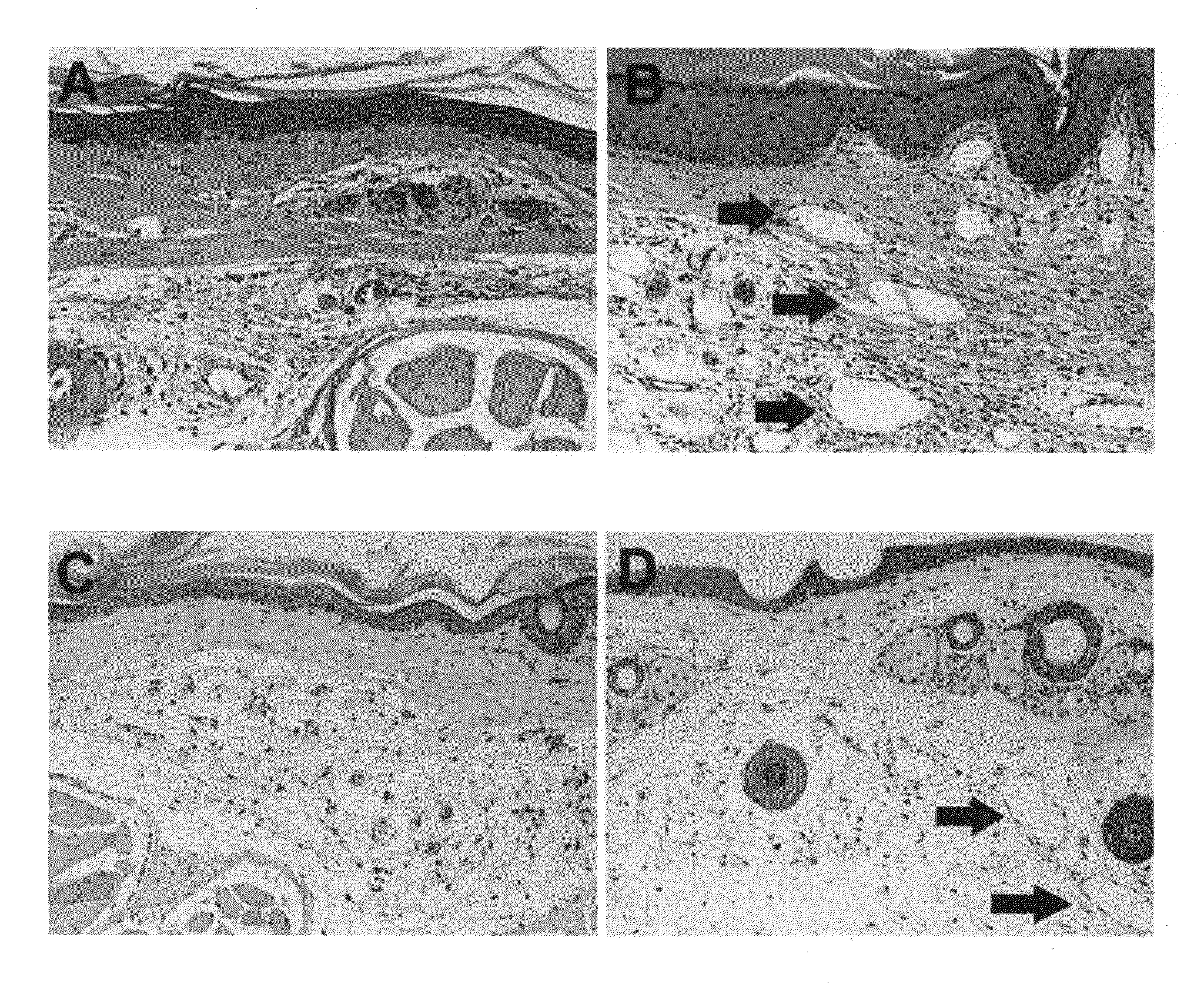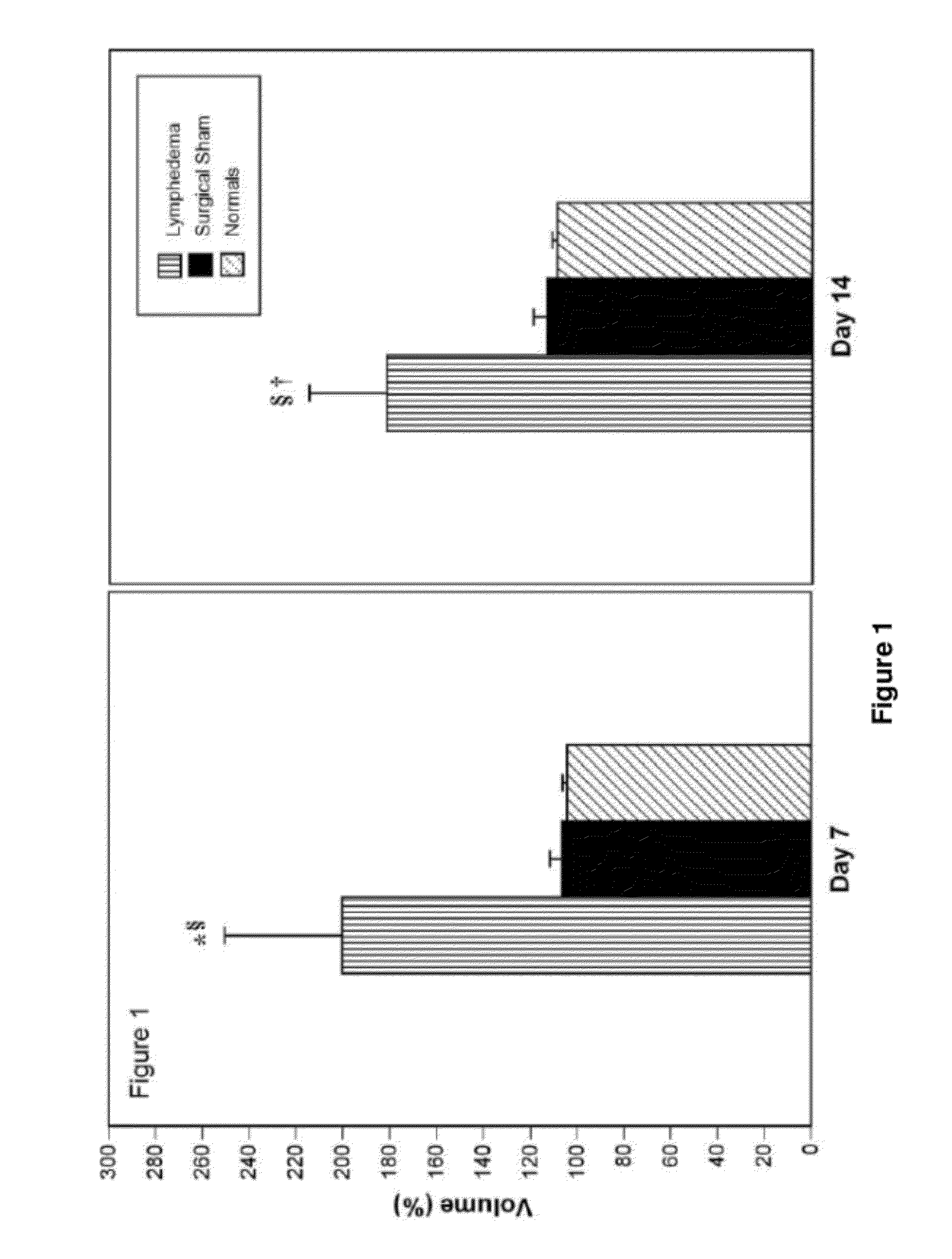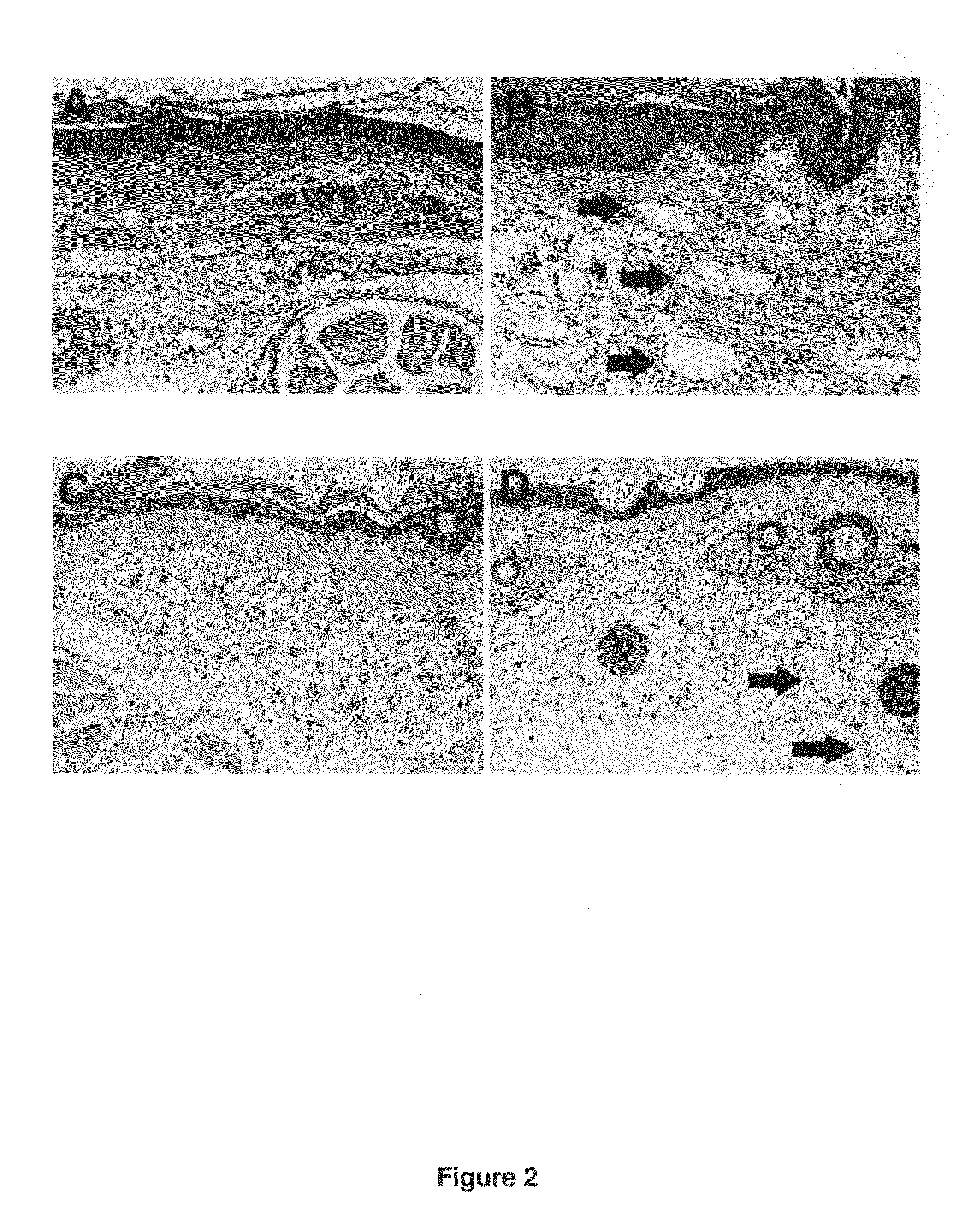Lymphedema associated genes and model
a technology of lymphedema and associated genes, applied in the field of lymphedema associated genes and models, can solve the problems of fibrosclerotic tissue production, reversal of flow, and stagnation of high molecular weight proteins in the interstitium
- Summary
- Abstract
- Description
- Claims
- Application Information
AI Technical Summary
Benefits of technology
Problems solved by technology
Method used
Image
Examples
example 1
[0194]Transcriptional profiling has been utilized in the molecular characterization of isolated lymphatic endothelia but the molecular end-organ response to lymph stagnation remains un-addressed and poorly understood. An elucidation of whole tissue response to disease can provide insights into the important interactions between the tissue matrix and the resident, heterogeneous cellular populations that comprise the target-organ response to persistent lymph stagnation.
[0195]To investigate the tissue responses to lymphatic vascular insufficiency, we have therefore undertaken dynamic, in vivo imaging of the impaired immune traffic in a murine model of acquired lymphatic insufficiency that simulates the lymphatic dysfunction of post-surgical lymphedema. These observations were correlated with an assessment of the cutaneous histopathology in the lymphedema tissue.
[0196]To investigate the molecular mechanisms of tissue response to lymphatic vascular insufficiency, a large scale transcript...
example 2
Molecular Profiling of Human Lymphedema
[0229]Paired whole genome transcriptional profiling was performed using the Agilent human array (n=30). Expression profiles of untreated and post-treated lymphedemous tissue were compared to the normal cutaneous RNA from the same subject.
[0230]The expression of 8431 of the genes assayed was altered in lymphedema versus normal tissue (p≦0.02; 1309 of these genes significant at p≦0.001; 313 genes significant at p≦10−5). 6050 of the 8431 genes (72%) displayed directional normalization after ketoprofen treatment. Table 6 (below) provides a list of genes that were identified in the screen that encode secreted or cell surface proteins that are statistically significantly upregulated in lymphedemous tissue and thus may be used to diagnose lymphedema in an individual. Quantitative RT-PCR was used to validate microarray results; representative examples of results are provided in FIG. 7.
TABLE 6Genes of particular interest identified by molecular profilin...
example 3
Natural History of Lymphedema
[0231]Evaluation of the efficacy of molecular treatment strategies for lymphatic vascular insufficiency requires a suitable preclinical animal model. Ideally, the model should closely replicate the untreated human disease in its pathogenesis, biology, and natural history. Acute post-surgical lymphedema was experimentally created in the mouse tail and contrasted with the effects of exogenously administered human recombinant VEGF-C.
[0232]Quantitative assessment of immune traffic function was performed through sequential in vivo bioluminescent imaging. In untreated lymphedema, tail edema was sustained until day 21. Exogenous administration of human recombinant VEGF-C produced a significant decrease in volume. Untreated lymphedema in the mouse tail was characterized by the presence of dilated cutaneous lymphatics, marked acute inflammatory changes, and hypercellularity; VEGF-C produced a substantial reversion to the normal pattern, with notable regression in...
PUM
| Property | Measurement | Unit |
|---|---|---|
| volume | aaaaa | aaaaa |
| vertical distances | aaaaa | aaaaa |
| circumferences | aaaaa | aaaaa |
Abstract
Description
Claims
Application Information
 Login to View More
Login to View More - R&D
- Intellectual Property
- Life Sciences
- Materials
- Tech Scout
- Unparalleled Data Quality
- Higher Quality Content
- 60% Fewer Hallucinations
Browse by: Latest US Patents, China's latest patents, Technical Efficacy Thesaurus, Application Domain, Technology Topic, Popular Technical Reports.
© 2025 PatSnap. All rights reserved.Legal|Privacy policy|Modern Slavery Act Transparency Statement|Sitemap|About US| Contact US: help@patsnap.com



